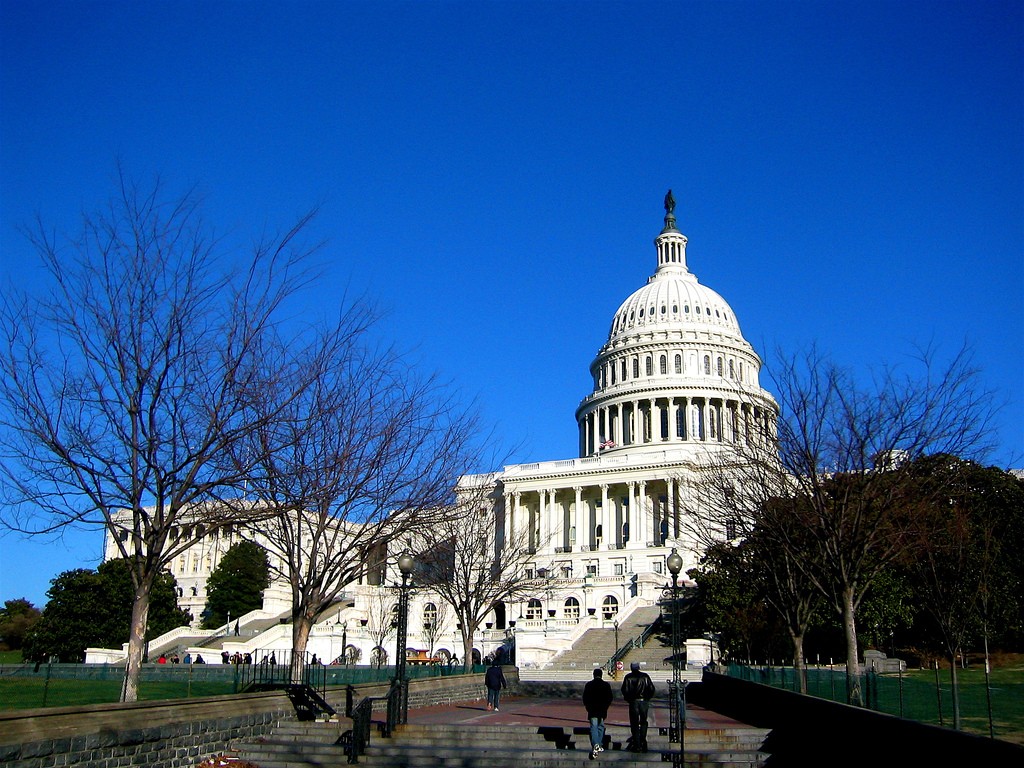
We’re only three weeks away from the expiration of MAP-21, the transportation law of the land, and Congress still does not have a solid plan for renewing or extending it — or for keeping the nation’s transportation fund solvent past the first days of summer.
Well, we’re here. Seems like just yesterday we were writing the news that Congress had finally passed a new transportation law. But that law, MAP-21, the Moving Ahead for Progress in the 21st Century Act, was only two years in length instead of the customary six, and it will expire at the end of the month after its first short-term extension concludes. Congress is no closer to agreeing on a multi-year replacement than they were when they kicked the can down the road last summer. To complicate matters, the temporary funding patch that Congress passed in 2014 to keep the Highway Trust Fund solvent will run dry by mid-July, according to USDOT projections.
So far, Congress has not hatched a concrete plan to reauthorize MAP-21 and find a long-term stable funding source, but lawmakers do have some ideas.
In February, Rep. Earl Blumenauer (D-OR) introduced a bill that would nearly double the federal gas tax over the next three years to help fund a long-term transportation bill.
Last month, a bipartisan group of Representatives led by Reps. Renacci (R-OH) and Pascrell (D- NJ) introduced The Bridge to Sustainable Infrastructure Act, which seeks to raise the gas tax by indexing it to inflation by January 2016. The gas tax would then rise every three years unless Congress finds another funding source for the Highway Trust Fund, ultimately guaranteeing 10 years of funding for the transportation program. This bill is the only plan with any bipartisan support that proposes to raise user fees (i.e., the gas tax) in any way. It currently has 20 cosponsors: eight Republicans and 12 Democrats.
Several lawmakers and the Obama Administration have proposed using a one-time repatriation of corporate profits as a source of funding. Barbara Boxer (D-CA) and Rand Paul (R-KY) introduced a bill that would encourage corporations holding profits overseas to return these profits to the US through voluntary “tax holiday” at a decreased tax rate of 6.5 percent. The Obama Administration’s plan would force companies to return their overseas money to the U.S. and pay a 14 percent tax rate on that money. Both repatriation proposals would transfer a portion of the earnings from the tax on returned corporate profits to the transportation trust fund.
Reps. John Delaney (D-MD) and Richard Hanna (R-NY) introduced a bill that would tax overseas profits by 8.75 percent, and would potentially raise $170 billion for the Highway Trust Fund.
What will happen before May 31?
Several lawmakers have sounded the alarm on finding a plan to reauthorize MAP-21 and keep the Highway Trust Fund solvent before the May 31st deadline passes.
U.S. Transportation Secretary Anthony Foxx called the short-term extensions that several lawmakers have proposed an “outrage,” saying that a long-term plan was necessary so transportation planners could be sure that they’d have the funding needed to move forward with long-term plans.
Senate Minority Leader Harry Reid (D-NV) is rallying fellow Democrats in the Senate to block a Republican-backed trade deal until the Senate deals with funding the Highway Trust Fund (and the Foreign Intelligence Surveillance Act). Senate Majority Leader Mitch McConnell (R-KY), meanwhile, also cited the need to address MAP-21, calling it a “must-do” item that needs to be completed by Memorial Day.
Over in the House, Majority Leader Kevin McCarthy (R-CA) sent a memo to his fellow House Republicans that urged them to act to keep the Highway Trust Fund solvent, which is set to go broke by midsummer. He said that any proposals to increase the gas tax, however, would be dead on arrival this Congress.
Next year’s budget
Whether Congress reauthorizes MAP-21 and extends the Highway Trust Fund will affect funding for next year’s budget for all transportation and housing programs. The House’s Transportation, Housing and Urban Development subcommittee released a transportation budget that proposes heavy cuts to TIGER, New Starts and Amtrak capital funding while holding steady funding levels for highways and other programs. The full House is expected to consider the Committee’s transportation appropriation bill upon return from a weeklong recess. The Senate Appropriations Committee has yet to release their proposed fiscal year 2016 transportation budget. While slow on the uptick, we expect this Congress to be more active on transportation items over the coming summer months. Stay tuned.




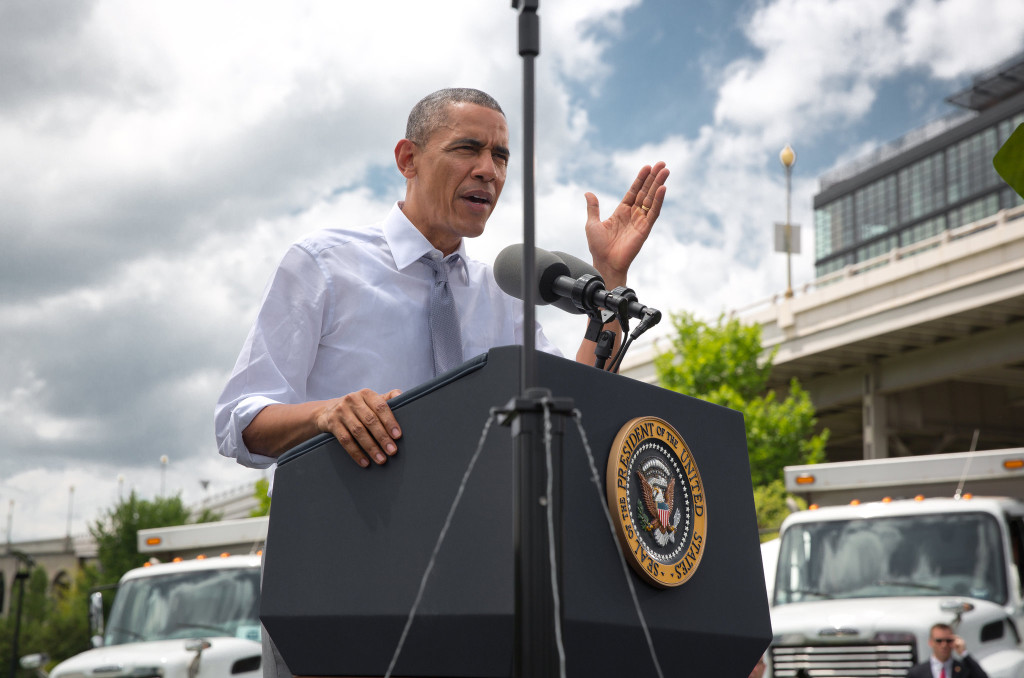
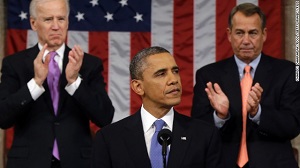
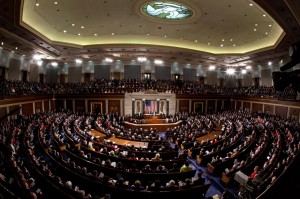


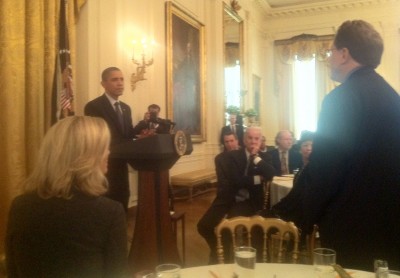 Brian Imus of Illinois PIRG, Scott Wolf of Grow Smart Rhode Island, and Arnold Weinfeld of the Michigan Municipal League (pictured, standing right) were invited guests of the President for his Monday working group meeting in the White House to talk about the urgent need for America to invest more dollars, wisely, in our aging transportation system.
Brian Imus of Illinois PIRG, Scott Wolf of Grow Smart Rhode Island, and Arnold Weinfeld of the Michigan Municipal League (pictured, standing right) were invited guests of the President for his Monday working group meeting in the White House to talk about the urgent need for America to invest more dollars, wisely, in our aging transportation system.
